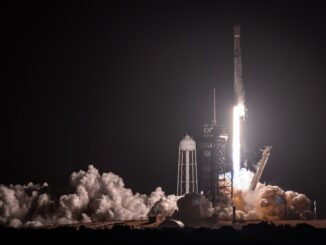
Starlink

Falcon 9

Falcon 9

Falcon 9

Falcon 9

Mission Reports

Falcon 9

Falcon 9

Falcon 9
SpaceX reaches 19 flights with a Falcon 9 booster for a third time with Starlink mission
SpaceX managed to thread the needle with the weather and launch the first of two planned Starlink missions from Cape Canaveral in 48 hours. A Falcon 9 rocket launched from pad 39A at the Kennedy Space Center on Saturday at 11:09 p.m. EDT (0309 UTC on Sunday). It will be followed by another Falcon 9 from nearby pad 40 on Cape Canaveral Space Force Station on Monday.

Falcon 9

Falcon 9
